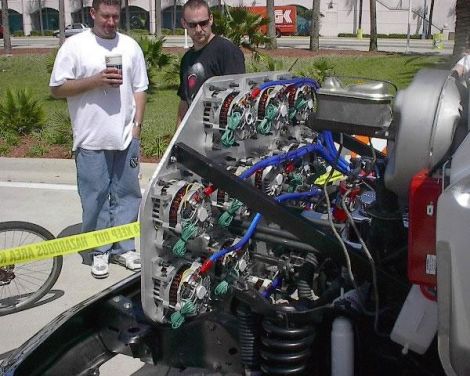
I’ve settled on the fact that I want to upgrade my electrical this next weekend, but I haven’t settled on how.
My options are, simply:
1. Full dual batt with a DC to DC charger system and a new sub panel and wiring w/solar ready (~$900-$1000)
- battery tray
- washer relocation kit
- dual charger kit (Ctek 20amp kit)
- new sub panel
- circuit breaker
- wiring and terminals for sub panel
- 2 new batteries [group 31 deep cycle main, group 24 wet cell main] (main is due)
2. Full dual batt with BluSea ACR (same as above but replace DC to DC charger for ACR) ($700-800)
3. Single battery with new sub panel w/solar (~$700)
new battery [group 31 dual cycle] (main is due)Solar panelSolar Charge controllernew sub panelcircuit breakerwiring and terminals for sub panelnew jump start pack
4. Single Battery with new sub panel and portable power pack (~$850)
- new battery [group 31 dual cycle] (main is due)
- New sub panel
- circuit breaker
- wiring and terminals for sub panel
- new jump start pack
- portable power pack for fridge (goal Zero, suaoki power, National Luna, homemade)
I hate that all of these options are going to cost mega money.
Pros and Cons
Option 1
Pros
1. DC to DC charger means batteries last longer and I can use whatever battery chemistry I want in any mix.
2. more weight over the front axle means better ride and flex (my front axle flex is limited by weight right now
3. Built in solar controller allows for plug and plug solar add on without additional controllers.
4. Fully isolated
5. Tons of power and self contained (not portable)
Cons
1. More money
2. 20 amp charge rate, max charge rate available with the outlay of another $300
3. No combine function for easy self jumping
4. Not portable
Option 2
Pros
1. Nearly the cheapest
2. same weight/ride advantage
3. allows for isolated or combined functionality
4. Tons of power
5. Full amp charging
Cons
1. Alternator bulk charge only, not smart charging
2. no solar option (without additional controller)
3. combine function requires additional hardware and wiring (could just jump with jumper cables)
4. not portable
Option 3
Taken off the list, I don’t want to pay for another AGM battery my alternator doesn’t want to fully charge.
Option 4
pros
1. doesn’t require another battery, tray, relocating kit, wiring
2. completely portable, car, trailer, boat, whatever
cons
1. not very powerful unless you go full power pack, in which case its not very portable
2. still expensive
Needs
- I need to be able to leave the fridge in freeze mode for 2-3 days without a car start
- I need to completely rewire all the sub electrics (lightbar, fridge, CB, Future HAM, Aux lighting...coming soon, usb chargers, etc) This is the whole point
- I need some kind of promise of reserve power
Wants
- Would love to be able to have this be semi portable, I have 2 Cruisers that alternate touring duty; My 80 series is the prime adventure machine, but the 12o is the prime trailer camping machine and that means the fridge moves around. Frankly the need for extended fridge power means more for the later than the former.
I can’t decide which one makes the most sense for me.
A 4th option could be option 1 but instead of installing the dual battery I would swap out a group 31 deep cycle for an AGM and then install the CTEK on a battery box and run heavy gauge wire in both trucks to the cargo area to charge the 2nd battery like a thumper. Basically the same thing as a Thumper or National Luna power pack. In any case I need to rewire the main electrics in the cruiser, the current solution is a mess. I could do a bussman like other here, and I even have a bracket for it.
I hate decisions like this.
{UPDATE}
So I’ve come to the conclusion that I’m not going to worry about the GX here. I have a solution that I don’t love but will work suitably in that case:the GX has an ignition hot, persistent switched internal 100 Watt inverter, I can just bring a group 24 agm in a battery box with a direct fused cable to the fridge and run my 3.5 amp ac-dc smart charger. When the car is running the charger will put 3.5 amps/hr into the batter which should just be ahead of the 2 amp/hr draw, when the car is off the fridge will be totally isolated. When I am going to be driving for a while I will switch the fridge over to alternator supply so the battery can catch up. Its inefficient but it’s free and functional. If I could do this same setup but with 20-30 amps, I would be pumped, but the costs add up to not being worth it for right now.